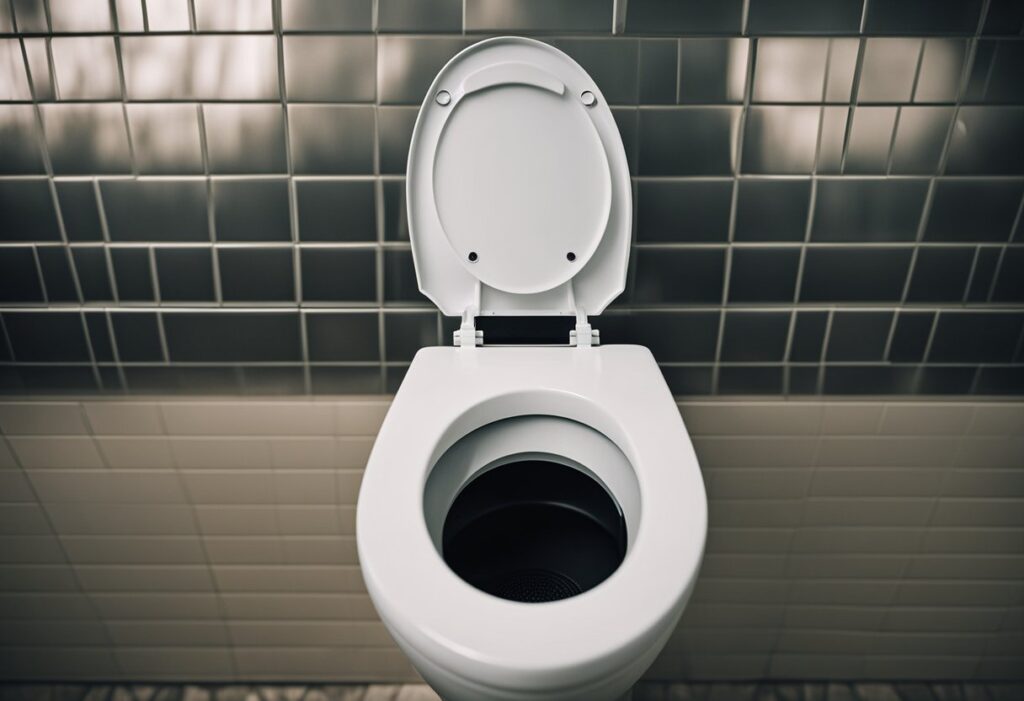
We saw many homeowners wonder if a toilet vent can be installed downstream of the toilet connection.
Now, it’s quite common to hear that a toilet vent should be upstream of the connection to ensure optimal efficiency and proper wastewater flow. This arrangement has been built to maintain balanced air pressure, that allows waste and water to flow freely and prevent sewer gases from pushing back into the bathroom.
And, downstream toilet venting is sometimes a viable option, but not recommended. With careful planning and proper installation, downstream venting can work efficiently without compromising the functionality of your plumbing system.
Basic Principles of Toilet Venting
Venting toilets is crucial for plumbing in buildings. It helps get rid of sewer gases and keeps drainage working well. Let’s talk about the basics of toilet venting to help you understand this important process.
First, let’s cover the primary functions of a toilet vent. It serves two main purposes:
- Allowing air to enter the system: This helps balance the pressure in the pipes and prevents water in the traps from being siphoned out due to negative pressure, also known as the siphon effect.
- Expelling sewer gases: Vents allow potentially harmful odors and gases originating from the waste system to dissipate instead of entering the living spaces.
When it comes to vent positioning, there are some guidelines to follow. A toilet vent can be downstream, but it’s important to keep a few things in mind. Depending on the specific layout and design of the plumbing system, the vent must be able to maintain proper airflow and work effectively. The key aspects that impact toilet vent positioning include:
- Distance from the vent: To ensure optimal air circulation, there should be an ideal distance from the toilet to the vent pipe. It’s typically recommended that the vent be placed within 6 feet of the toilet, although local codes may vary.
- Proper connections: To avoid potential issues, the vent pipe must be connected properly to the drainage system. Combining horizontal and vertical connections might be a good way to maintain effective venting while also providing the flexibility required to fit the vent into the existing plumbing layout.
- Pipe sizes: Ensuring that the vent pipe has an appropriate diameter is essential for maintaining sufficient airflow. Generally, the vent pipe’s diameter should match that of the toilet drain pipe.
What are the potential problems with a downstream toilet vent?
First and foremost, blockages can become a significant issue in downstream toilet vents. Blocked drains due to waste buildup can trap sewer gases and unpleasant odors, allowing them to escape back into your home. This is a direct result of the airflow dynamics being compromised.
Another concern with downstream toilet vents is the risk of improper functionality. Having a vent further away from the toilet can lead to slower water flow in the drainage system. In extreme cases, this can even cause water to flow back into the toilet, creating an unsanitary environment.
- Inefficient waste drainage
- Increased risk of blockages
- Sewer gases entering the living space
- Potential for unsanitary conditions
Furthermore, compliance with building codes may be compromised when the vent is downstream. If a downstream vent does not meet appropriate guidelines, it may require costly alterations in the future.
Upstream vs Downstream Venting
In toilet venting, we commonly encounter two primary methods: upstream venting and downstream venting. Here, we’ll explore both methods and talk about the pros and cons of each. This information is useful for figuring out which method might work better in certain situations.
Upstream Venting
With upstream venting, the vent is installed at the top of the soil stack, just above the toilet bowl. This type of venting has been gaining popularity in recent years due to some of its benefits.
For example, upstream venting can provide more efficient airflow and reduce the risk of water seal loss in the toilet’s trap.
Additionally, it may work well for situations where space is limited, allowing for a relatively simpler installation process. However, it’s important to consider local plumbing codes and best practices when implementing upstream venting.
Downstream Venting
On the other hand, downstream venting places the vent further down the pipe system, after the toilet connection. Some benefits of downstream venting include:
- Space-saving design
- Cost-effective
- Easier installation
- Fewer pipes to maintain
- Improved aesthetics
- Increased flexibility in design
- Optimal functionality
- Reduced risk of blockages
- Enhanced efficiency
Downstream venting is a more traditional approach and is widely accepted by plumbing professionals. It provides reliable venting while keeping the overall plumbing system simple and easier to maintain.
Can a Wall Hydrant or Hose Bibb Affect the Placement of a Downstream Toilet Vent?
The difference between wall hydrant and hose bibb matters when considering the placement of a downstream toilet vent. A hose bibb typically does not require venting, but a wall hydrant may need venting to prevent siphoning. Understanding the specific distinctions is crucial for proper placement and venting in plumbing systems.
Alternative Solutions
We understand that homeowners and plumbers are often looking for alternative solutions when it comes to toilet venting. A toilet vent can usually be installed downstream or upstream, depending on the situation and specific needs.
combination waste and vent
One option is to install a combination waste and vent (CWV) system. This method combines the drain and vent pipe into a single unit, saving both space and resources. A CWV is particularly beneficial in smaller homes or areas with limited space. Here are some advantages of this system:
- Space-saving design
- Simplified installation
- Fewer piping materials required
installing a wet vent
Another possible solution is installing a wet vent. A wet vent is a vent that also serves as a drain for one or more fixtures. This option involves going downstream of the toilet and adding a Wye, which must be angled between 0 and 45 degrees from the horizontal. Connecting a 2-inch wet vent to the Wye can help manage gas and air pressure in the sewer pipes while also allowing for proper drainage. Some benefits of wet venting include:
- Reduced number of vents required
- Easier maintenance
- Compliance with plumbing codes (depending on location)
If your toilet vent is too close to another vent, there’s a risk of backdrafting. In such cases, you can consider relocating the vent so that the two vents are at a safe distance from each other. This will reduce any chance of harmful sewer gases entering your home due to improper venting.
air admittance valves
Lastly, you may consider utilizing air admittance valves (AAVs) in some situations as an alternative to traditional venting methods. AAVs are one-way mechanical vents that allow air to enter the drainage system while preventing sewer gases from escaping. They can help maintain proper pressure within the pipes and are sometimes useful in challenging plumbing situations.

Leave a Reply